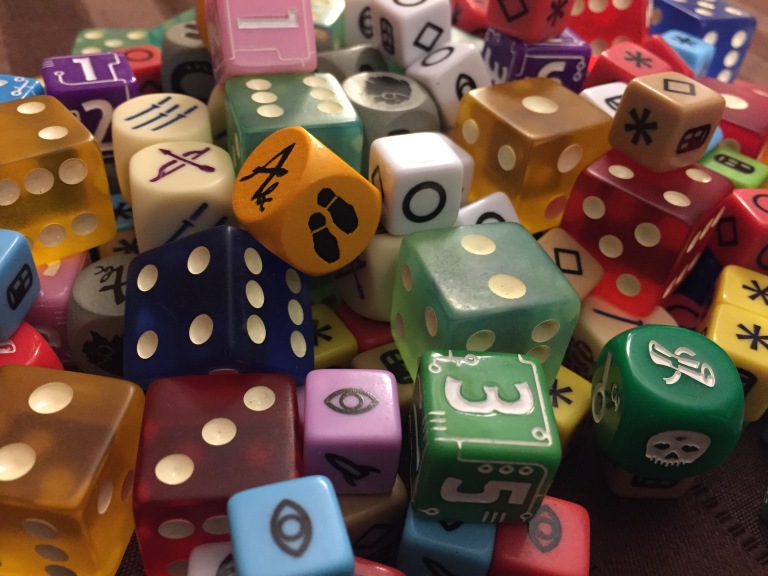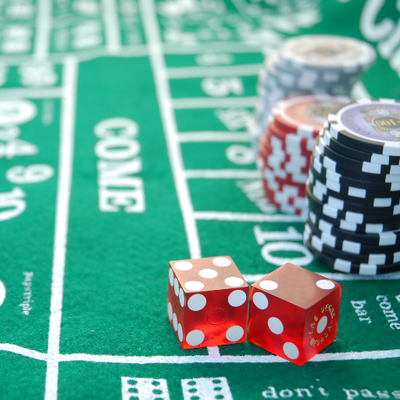Dice Mechanics Craps
Can setting the dice and throwing them under control really affect the outcome of a craps game? Obviously, no one can control the outcome of the dice on every single roll. Even a Major League pitcher can't throw a perfect curve ball every time. However, they can throw that old curveball on a regular basis.
- Dice Mechanics Craps Game
- Dice Mechanics Craps Games
- Dice Mechanics Craps Play
- Dice Mechanics Craps Rules
When I teach statistical thermodynamics or quantum mechanics, I analyze craps on the first day of class. I arrive early and kneel in a corner of the room, throwing dice against the wall. As students come in, I invite them over for a game. It's a little creepy, but by the time class begins the students know the rules and are ready to start. You can also learn about dice control from Frank Scoblete and Dominator’s best-selling book, Golden Touch Dice Control Revolution. The book contains over 90 photographs that explain the mechanics and technique of dice control (available at amazon.com or in bookstores). Heavy's Axis Power Craps Dice Control Seminar is now available on DVD! This is the breakthrough video that sent the competition back to the drawing board. This was first professionally produced DVD demonstrating the mechanics of a controlled dice shot. Playing craps online and Bitcoin craps is the same with the craps played in land-based casinos. The game mechanics are the same. The game mechanics are the same. Online craps lets you take advantage of the features such as tutorials and customer support whenever you need assistance or encounter difficulties. The Second Key to Precision Dice Control The Second Key Is the Apex Dice-Strike. Your objective is to have the dice strike the back wall at the apex of the second or third (for very long tables) trajectory.
The question is, can the dice be manipulated and thrown in a certain manner to produce a regularly controlled throw? Some once-skeptical researchers are conceding that more testing is needed. For new dice players, just rolling the dice can be a bit daunting, but once you get the hang of it, it's easy. By throwing the dice in the same manner, each time, some shooters get into a rhythm that produces monstrous rolls.
The Sevens to Rolls Ratio
There are 36 combinations that can be made from of a pair of dice and six ways to attain a seven. This means that, with a random roll, the mathematical probability of a seven appearing will be once in every six rolls, which is a 'Sevens to Rolls Ratio (SRR)' of 6. The house edge is calculated with this ratio.
If you throw the dice 42 times and roll seven 7's, you have a Sevens to Rolls Ratio of 6 (42/7 = 6). If, however, you have one non-random roll and throw seven 7s in 43 rolls, you have an SRR of 6.14. This is enough to negate the house edge on the 6 and 8 place bets. Just one controlled throw out of every 43 rolls of the dice would eliminate the house edge and yield a break-even game.
How to Control the Dice
Controlled throwing consists of several components. How you set the dice can affect their outcome. One of the most popular sets is the 3-Vm where you have threes in a 'V' formation. This gives you the hard six (3 and 3) on top, the six, (5 and 1) on the front, the eight on one (6 and 2) on the back and the Hard eight (4 and 4) on the bottom. There are no sevens showing on the dice with this set.
After setting the dice you must use a smooth delivery that is strong enough to get the dice to the end of the table but without too much force that will cause them to bounce hard against the back of the table. You also want to make sure that you follow through with your throw. You want to practice so you are throwing the dice the same way each time. Your goal is to throw numbers while avoiding the seven. Throwing the same way can produce repeating numbers.
Practice Makes Perfect
For those interested in learning more about dice control, The Golden Touch Dice Control Revolution by Frank Scoblete and Dominator and Wong on Dice by Stanford Wong. These books can teach you the basics but the rest depends on how much effort you put into practicing.
The controlled throwing of dice is a physical skill which requires hours of practice to master. It is not easy and some players never master it. Perfecting a controlled throw is not enough to guarantee regular wins at the craps table. You will also need to learn how to bet properly to take advantage of your edge.
Note from the author: I am an instructor for Golden Touch Craps, a company that teaches dice control seminars and I contributed to the book Golden Touch Dice Control Revolution.
Relative Phase data is the same kind of idea as, if a die was unbalanced (weighted) over a large number of 'random' rolls, it would be clear that the die was favoring a certain number or numbers.
Having said that, I'd like to say that I am interested more in the rigid body dynamics of dice than predictions based on any other model.
Why? Unlike cards, where probability varies due to deck loading, or roulette, where mechanical biases result in certain numbers being more prominent, craps advantages are based WHOLLY on the skill of a shooter to impart an equal and controlled force to both dice.
There are numerous ways to track and assess any advantage a shooter may have, and I don't believe there is any one 'right' way (though there may be a few 'wrong' ways).
 Considering the physical model of the manner the rigid bodies act, and based on my video analysis of dozens of throws, I consider 'relative' activity to be very important.
Considering the physical model of the manner the rigid bodies act, and based on my video analysis of dozens of throws, I consider 'relative' activity to be very important.The 2 dice are not independent, but semi-independent.
Dice Mechanics Craps Game
1) They do interact, at least at the very beginning of the toss, and sometimes later in the toss and roll out.2) They are launched at the same time by the same hand.
3) They land on the same table.
I would only call them fully independent if they were thrown at separate times!


As such, I consider relative dice movements to be of great importance to the DI.
A high primary score means that the DI is throwing the dice with high correlation. If the primary is a primary OFF the pitch axis, it's still a primary, and it means one of two things:
1) The dice received relatively equal forces and reacted with the table in relatively equal ways, to have a coherent result.
2) It was purely random.
Item (2) above can be applied to every single outcome. Was an outcome a factor of chaos, or not?
The only way to claim it is a factor of influence is to examine a large number of outcomes, and then look for deviation from random.
If you find significant deviations from random, and those deviations are well distributed across the sample data, then you can claim that they are a result of influence.

The *degree* of credibility of the appearance of influence depends on the amount of sample data, and the deviation from random that is indicated (the smaller the deviation from random, the larger the amount of sample data required to validate to a certain level of confidence).
Having said all this, the idea that a throw has results that indicate some movement off the pitch axis cannot also possess an element of control is not supported by data I have collected, including video analysis of tosses.
How do you know if a pair of dice land on a primary, and did so staying on e pitch axis? You don't. They could have easily both rotated from the pitch to the yaw axis equally, and still rolled out to a primary.
In fact, it appears that overhand tosses with high backspin do this quite alot (due to gyroscopic precession effects).
It is STILL a controlled throw.
Ultimately, it is the MECHANICS of the toss that are important and no mathematical theory can change that - all math can do here is validate influence, and not 'create' influence as math can do with Blackjack.
Math may be assistive in choosing sets, or creating wagering strategies, and it may be assistive in indicating flaws in one's toss mechanics. But it can't 'create' influence. That task is solely up to the skill of the shooter to manipulate the mechanical outcome of the dice.
And if one or both die change the dominant rotational axis before coming to rest, that does not necessarily mean those die are no longer 'influenced'.
Cheers